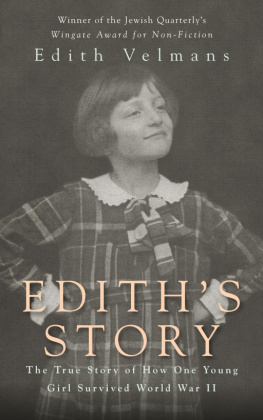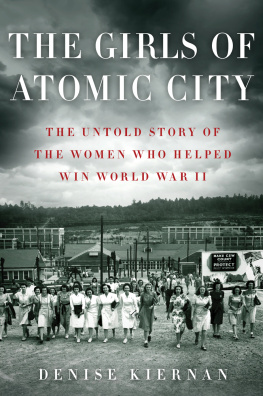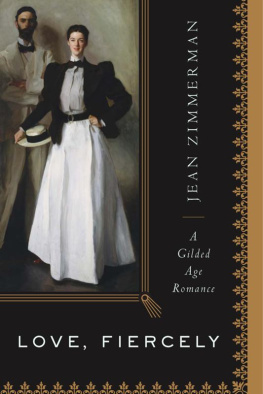Thank you for downloading this Simon & Schuster ebook.
Get a FREE ebook when you join our mailing list. Plus, get updates on new releases, deals, recommended reads, and more from Simon & Schuster. Click below to sign up and see terms and conditions.
CLICK HERE TO SIGN UP
Already a subscriber? Provide your email again so we can register this ebook and send you more of what you like to read. You will continue to receive exclusive offers in your inbox.
We hope you enjoyed reading this Simon & Schuster ebook.
Get a FREE ebook when you join our mailing list. Plus, get updates on new releases, deals, recommended reads, and more from Simon & Schuster. Click below to sign up and see terms and conditions.
CLICK HERE TO SIGN UP
Already a subscriber? Provide your email again so we can register this ebook and send you more of what you like to read. You will continue to receive exclusive offers in your inbox.
For Joe
A Winters Tale
That was the year she started spending her winters in New York again.
Edith Dresser was fifteen years old when her grandmother, Susan Elizabeth Fish LeRoy, decided that she and the Dresser children would leave their Rhode Island home for the Christmas season. The year was 1888. Seasonal migrations from Newport to New York were common among their privileged set, and the allure of the great city on the Hudson still drew their grandmother into its predictably casted embrace. Grandmother was a woman at ease in the world of drawing rooms and calling cards, one who appreciated both the ritualistic behaviors and increased social diversions that New York could be counted on to provide. New Amsterdamas Manhattan had once been knownhad been home to their familys Dutch ancestors. Now Grandmother, in turn, had become all that constituted home and family to Edith, her three sisters, and brother.
Grandmother had arranged to rent a house at 2 Gramercy Square, a very respectableif not ultra-fashionableaddress for the family. Its next-door twin, 1 Gramercy, had been the last home of the noted surgeon and professor Dr. Valentine Mott. Mott had helped establish the short-lived Rutgers Medical College in lower Manhattan, and gained attention as the chair of surgery at both the University Medical College of NYU and Columbias College of Physicians and Surgeons. More salaciously, he earned some notoriety as a disruptor of all that was good and pure in the world of medical instruction when he promoted the idea of using human cadavers to instruct up-and-coming clinicians. His good works and surgical brilliance kept his reputation intact, even though the good doctor was known to have disguised himself as a laborer and visited graveyards to retrieve recently unearthed teaching aids.
Around the corner on the south side of Gramercy Square, at No. 16, was the brand-new Players Club, which was opening that winter. The building had been purchased by the actor Edwin Booth, who could currently be seen as Brutus in a production of Julius Caesar . Twenty-three years earlier, Booth had announced his retirement following his deranged brother John Wilkes Booths assassination of President Abraham Lincoln. Distraught over his brothers actions, Edwin penned an open letter to the People of the United States, which was published in several newspapers:
For the future alas, he wrote. I shall struggle on in my retirement bearing a heavy heart, an oppressed memory and a wounded namedreadful burdensto my too welcome grave.
However, he curtailed his retirement to a nine-month hiatus from the limelight, returning to the stageand welcome audiencesin 1866 as Hamlet, a role he continued to reprise. The newly founded Players Club would house an impressive library of theater history, as well as collections of paintings and autographs. Booth wrote a friend that he wanted the club to be a place where actors are away from the glamour of the theatre, and that thespians should spend more time mingling with minds that influence the world. To that end, founding members of the club included author Mark Twain and the celebrated Union Army general William Tecumseh Sherman.
2 Gramercy Square, where young Edith and her family would be staying, was the home of the Pinchot familybusinessman James Wallace Pinchot; his wife, Mary Jane Eno Pinchot; and their children, Gifford, Amos, and Antoinette. The Pinchot family had recently completed the building of a new Milford, Pennsylvania, home that had been designed by the noted New York City architect Richard Morris Hunt and subsequently dubbed Grey Towers. The Pinchots oldest son, Gifford, was away studying at Yale, and Edith and her sisters knew Nettie Pinchot from dancing class in Newport. The four-story brick house was Italianate in style, with cast-iron railings gracing its small balconies and floor-to-ceiling parlor windows. Ediths brother, Danielwho went by his middle name LeRoywas in his final year at Columbia, which meant that he would again be living under the same roof as his sisters. Susan, the oldest, was now twenty-four, and two years older than LeRoy. Natalie was nineteen and Pauline, the baby, was still just twelve. The family would be together, nestled in this house across from the gated park.
From outside those parlor windows looking in, one might have seen four young ladies and one young man living the kind of gleaming nineteenth-century life envied by scores of less fortunate citizens of the time. A closer inspection of their lives, however, revealed signs of difficulty and strain, like scuff marks hidden beneath the smooth veneer of a freshly polished parlor floor. They were five siblings, separated in age by twelve years; joined, as so many other families of the time were, by tragic loss.
Ediths parents had met at West Point, New York, where her father was a cadet and her mother, Susan Fish LeRoy, was staying nearby with her family at the Rose Hotel. After George Warren Dresser graduated from the United States Military Academy and posted at Fort Adams outside Susans home of Newport, he pursued his love. It was not an easy road.
The Fish-LeRoy family was exceptionally well known in New York circles where names carried the weight of history and bore the shackles of expected romantic pairings. First, middle, last, and family names were shuffled around from generation to generationperpetually recombining DNA of societal rankso that they would always be a part of ones title, ensuring that even the smallest link to storied heritage was immediately evident upon ones first introduction. Fish... LeRoy... King... Schermerhorn... Stuyvesant. Ediths mother had bestowed upon Edith a middle name taken from the surname of their ancestor, the famed Dutch governor Peter Stuyvesant. It would serve Edith in future times when money could not.
Ediths father was a congenial, accomplished, and educated man with an honorable if humbler background than that of her mother. George Warren Dresser was of New England stock, educated at Andover, and hailing from a line of teachers, farmers, and lawyers. Ediths grandfather Daniel LeRoy did not consider him an appropriate match for Ediths mother and objected vocally and often to George and Susans union. But her mothers older sister, Aunty Mary Kingwho herself had made a predictably wealthy yet loveless matchstood firmly on the Dresser side of love. Aunty King welcomed George into her home in Newport, where he was free to call on her sister. Hearts won out. In April 1863 at Calvary Church in New York, a line of groomsmen in uniform stood proudly by as George Warren Dresser married Susan Fish LeRoy. Then George headed south to war along with classmates, volunteers, and countless immigrants just arrived from places like Ireland and Germany.











